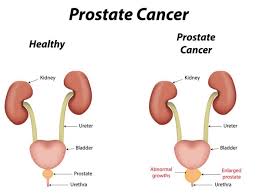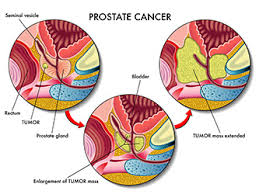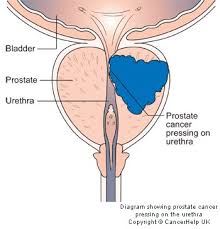
What is the Prostate Cancer?
The prostate gland in the male human body makes the liquid that structures some piece of semen.
The prostate organ lies just under the bladder before the rectum. It covers the urethra, which is the tube that brings out the urine and semen out of the body.
The researches show that after skin cancer, prostate cancer is the second most reason behind diseases mortality in the world. This type of cancer has no early indications but the later stage symptoms and signs can detect this medical condition. Read the signs and symptoms section to know more about it.
Discovering and treating the prostate malignancy before manifestation will make it possible for the patient to recover fully from it. Read about the robotic prostate cancer surgery to know about the treatment procedure.

What are the types of Prostate Cancer?
There are a few types of prostate cancer and the condition is often present in different parts of the prostate.
Let’s have a look at different types of prostate cancer:
• Benign prostatic hyperplasia (BPH): This is a non-cancerous type of tumor of the prostate. • Prostatic adenocarcinoma: This is the most common and slow growing form of cancer. • Small cell carcinoma: This cancer is made of small round cells and is very insistent form of prostate cancer that does not lead to an alteration in prostate specific antigen (PSA). • Squamous cell carcinoma: This is a non-glandular cancer. • Prostatic sarcomas: This type of cancer is very rare and the tumor is finished up of prostate cancer cell. • Transitional cell carcinomas: This type of cancer hardly ever develops in the prostate but develops from prime tumors present in the bladder or urethra.

Sign and Symptoms of Prostate Cancer
Some of the signs and symptoms associated with Prostate cancer are:
• Feeling sudden urge to the pass urine. • Passing urine more often than usual, particularly at night. • Trouble in passing urine, having to put strain to pass it • Stopping and starting of flow during urination. • A sense of not being able to fully empty the bladder. • Pain when passing urine. • Blood in the urine or semen.

Treatment of Prostate Cancer
The principle sort of robotic prostate cancer surgery Include the surgery for prostate growth. In this operation, the surgeon evacuates the whole Prostate organ in addition to a portion of the tissue around it, including the fundamental vesicles.
The robotic surgery framework has the capacity give better treatment than with the conventional and non-mechanical methods. This type of robotic setup gives the specialist a progressive, three-dimensional, multi-level amplification range to perform the procedure.
Some of the benefits associated with this type of surgery include the enhanced clinical results, less scar tissue development, and shorter recuperation period after the surgery.
Not at all like laparoscopic surgery, the surgical instruments utilized as a part of mechanical prostatectomy, can turn in all headings with 90 degrees of enunciation and 7 degrees of opportunity. Amid automated prostate surgery the da Vinci robot gives the specialist enhanced perception, mastery, and accuracy contrasted and open or laparoscopic surgery, while empowering operation through 1-2 cm entry points. The specialist controls the automated prostate surgery mechanical arms from the da Vinci comfort utilizing common hand and wrist developments. Movement scaling amid mechanical prostatectomy is intended to permit more prominent exactness than is regularly achievable in transparent prostatectomy surgery. For sure, customary laparoscopic instruments give specialists less adaptability, finesse and scope of movement.

